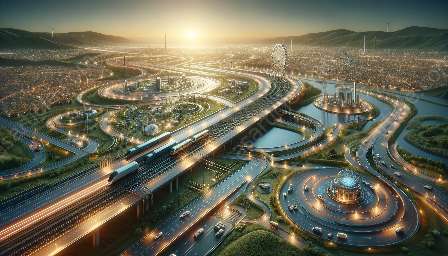Accidents can have devastating consequences, especially in the realm of transportation. It is vital to understand the causes of accidents and the factors that contribute to them. This is where accident reconstruction methods play a crucial role. In this comprehensive guide, we will delve into the various techniques and approaches used in accident reconstruction, their significance in transport safety and accident analysis, and their relevance in the field of transport engineering.
The Importance of Accident Reconstruction
Accident reconstruction is the process of analyzing the events leading up to, during, and after an accident to determine its cause and contributing factors. This involves gathering and analyzing data from the accident scene, such as physical evidence, witness statements, and expert analysis, to recreate the sequence of events that led to the accident. The primary goal of accident reconstruction is to establish a clear understanding of how and why an accident occurred, with the ultimate aim of preventing similar incidents in the future.
Transport Safety & Accident Analysis
Accident reconstruction methods are integral to transport safety and accident analysis. By accurately reconstructing accidents, safety experts and analysts can identify specific factors that contributed to the occurrence of an accident, such as vehicle speed, road conditions, human factors, and environmental elements. This information is invaluable in developing and implementing effective safety measures and policies aimed at reducing the frequency and severity of accidents in various transportation sectors, including road, rail, and aviation.
Methods of Accident Reconstruction
There are several methods and techniques employed in accident reconstruction, each with its own set of tools and procedures. Some of the most commonly used methods include:
- Photogrammetry: This involves using photographs or video footage of the accident scene to create accurate 3D models and measure distances, angles, and speeds.
- Crash Testing: Controlled vehicle or component crashes are conducted to study the impact and damage patterns, which can provide valuable data for reconstruction.
- Computer Simulation: Advanced software is used to simulate and analyze the dynamics of the accident, taking into account vehicle motions, forces, and environmental factors.
- Event Data Recorder Analysis: Data from onboard vehicle recorders are examined to extract information on vehicle speed, braking, and other relevant parameters prior to the accident.
- Human Factors Analysis: Understanding the role of human behavior and perception in accidents is essential, and this method focuses on factors such as reaction times and driver visibility.
Intersection with Transport Engineering
Accident reconstruction methods intersect with transport engineering in numerous ways. Transport engineers utilize the findings of accident reconstruction to improve the design and operation of transportation systems, vehicles, and infrastructure. By analyzing accident data and reconstruction reports, engineers can identify areas for improvement in road layouts, signage, traffic control devices, and vehicle safety features, all aimed at enhancing overall transport safety and efficiency.
Conclusion
Accident reconstruction methods are invaluable tools in understanding the causes and dynamics of transportation-related accidents. Their integration with transport safety and accident analysis, as well as their relevance to transport engineering, highlights their significance in developing safer and more efficient transportation systems. By continuously refining and innovating these methods, transportation professionals can work towards mitigating the risks associated with transportation and ultimately saving lives.

